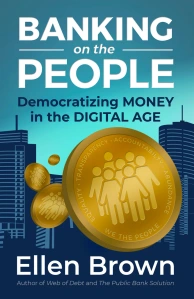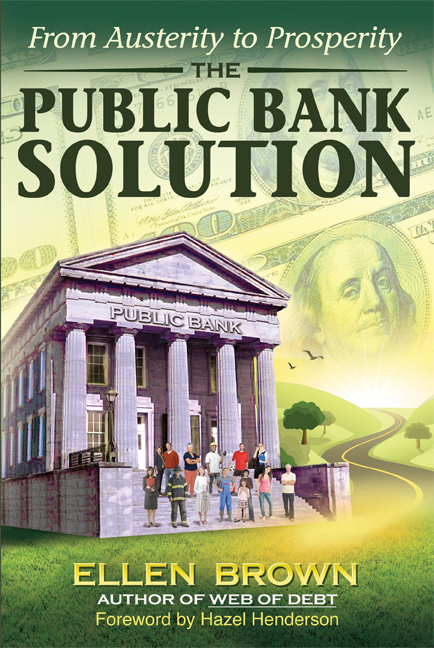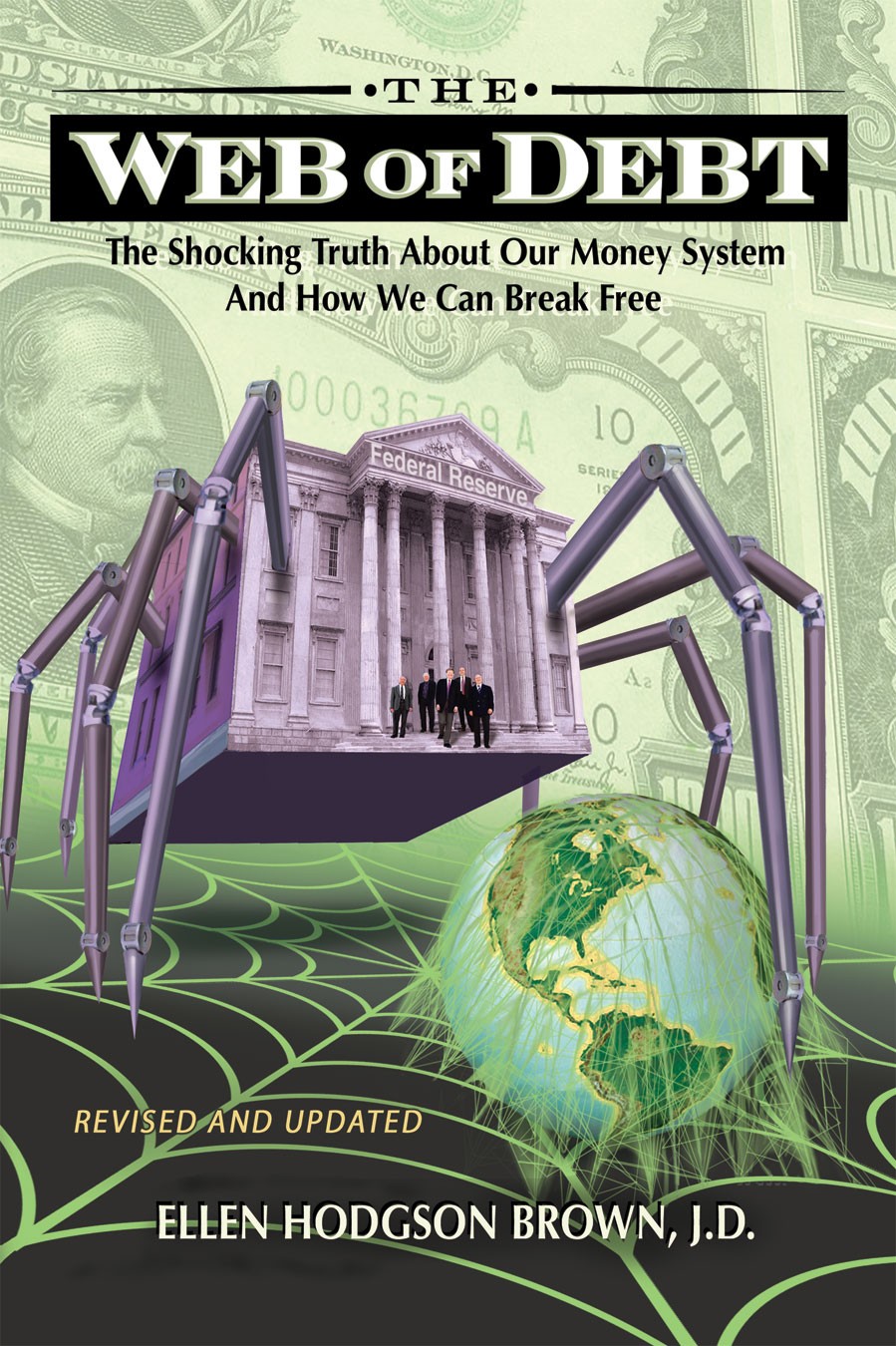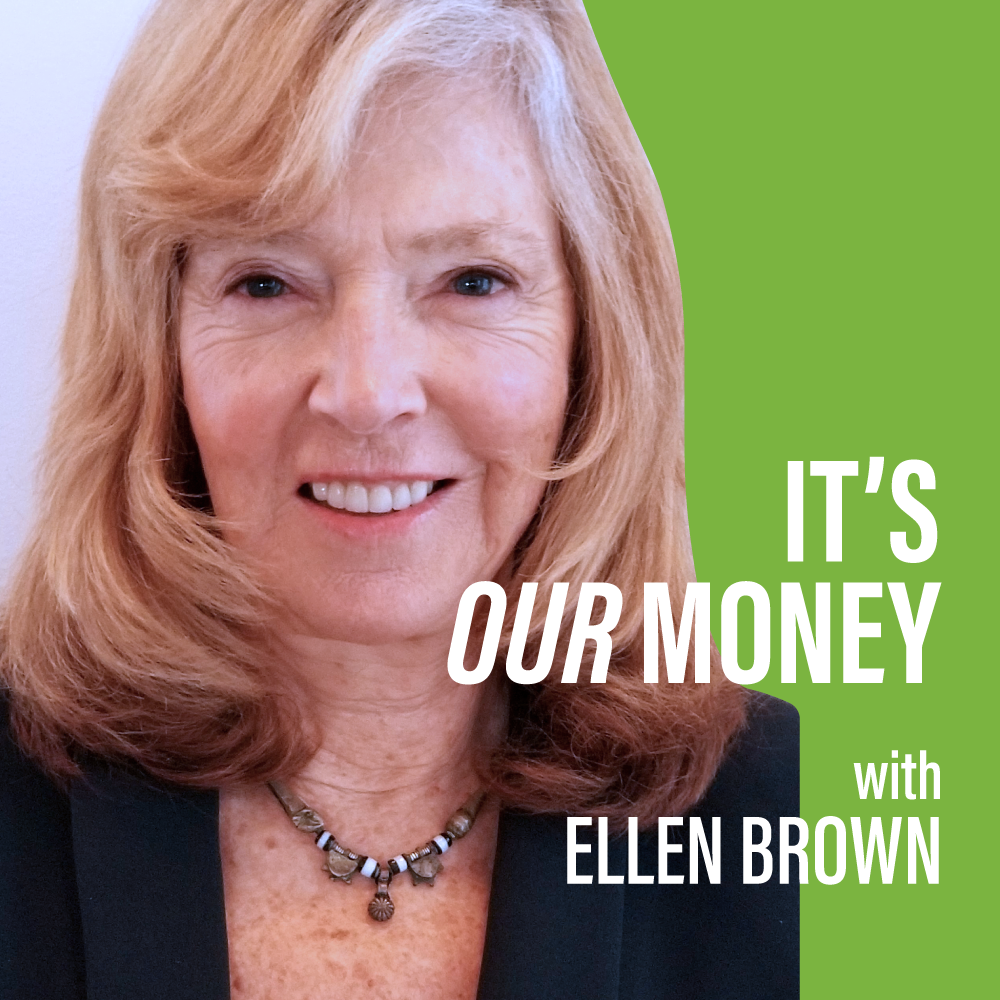Phil Murphy, the leading Democratic candidate for governor of New Jersey, has made a state-owned bank a centerpiece of his campaign. He says the New Jersey bank would “take money out of Wall Street and put it to work for New Jersey – creating jobs and growing the economy [by] using state deposits to finance local investments … and … support billions of dollars of critical investments in infrastructure, small businesses, and student loans – saving our residents money and returning all profits to the taxpayers.”
A former Wall Street banker himself, Murphy knows how banking works. But in an April 7 op-ed in The New Jersey Spotlight, former New Jersey state treasurer Andrew Sidamon-Eristoff questioned the need for a state-owned bank and raised the issue of risk. This post is in response to those arguments, including a short refresher on the stellar model of the Bank of North Dakota (BND), currently the nation’s only state-owned depository bank.
Which Is Safer, a Public Bank or a Private Bank?
Sidamon-Eristoff warns, “[W]e need to remember that a public bank would be lending the state’s operating cash balances – we’re not talking about an enormous pool of unused, unencumbered cash – and that any repayment shortfalls or liquidity restrictions could potentially impact the availability of funds for employee salaries and other regular operating expenses.”
As the Bank of England recently confirmed, however, banks do not actually lend their deposits. The deposits at all times remain in the bank, available for withdrawal. They are no less available to the state when deposited in its own bank than in Bank of America. In fact, they are more at risk in Bank of America and other Wall Street banks, which with the repeal of Glass-Steagall are allowed to commingle their funds. That means they can gamble with their deposits in derivatives and other risky ventures, something a transparent and accountable state-owned bank would not be allowed to do.
Today, government deposits are at risk in private banks for another reason. Banks across the country are telling governments of all sizes that they can no longer provide the collateral required to fully protect these deposits while paying a competitive interest rate on them, due to heightened regulatory requirements. FDIC insurance covers only the first $250,000 of these deposits, a sum government revenues far exceed. The bulk of these deposits are thus left insufficiently protected against a banking collapse like that seen in 2008-09—something that is widely predicted to happen again.
In North Dakota, by contrast, state revenues are deposited by law in the state-owned Bank of North Dakota and are guaranteed by the state. The BND pays a competitive interest rate on these deposits that is generally at about the midpoint of rates paid by other banks in the state. The BND, in turn, guarantees municipal government deposits, which are generally reserved for local banks. Unlike in other states, where local banks must back public deposits with collateral to an extent that makes the funds largely unavailable for lending, North Dakota’s community banks are able to use their municipal government deposits to back loans because the BND provides letters of credit guaranteeing them.
The concern that a New Jersey state-owned bank might make risky loans can be obviated by limiting lending, at least initially, to the same sorts of loans the state makes now, using the same underwriting standards. Sidamon-Eristoff observes that “the state already maintains a comprehensive range of economic development, infrastructure finance, housing finance, and student assistance programs.” What financing through the state’s own bank would add is leverage. State and local governments routinely make loans through revolving funds, in which the money has to be there before it can be lent out and must come back before it is lent again. Chartered depository banks are allowed to leverage their capital into 10 times that sum (or more) in loans, acquiring the liquidity for withdrawals as needed from the wholesale markets (Fed funds, the repo market or the Federal Home Loan Banks). A bank with adequate capital will lend to any creditworthy borrower, without first checking its deposits or its reserves. If the bank has insufficient reserves, it can borrow from a variety of cheap sources that are normally the exclusive province of the banking club, but that local governments and communities can tap into by owning their own banks.
That is one of the major benefits to the state of having its own bank: it can borrow very cheaply in the money markets. It can get the sort of Wall Street perks not otherwise available to governments, businesses, or individuals; and it is backstopped by the Federal Reserve system if it runs short of funds. This is the magic that allows banks to be so profitable, and it is what makes a publicly-owned bank exceptionally useful at state and local levels of government.
Cutting the Cost of Infrastructure in Half
Consider the possibilities, for example, for funding infrastructure. Like most states today, New Jersey suffers from serious budget problems, limiting its ability to make needed improvements. By funding infrastructure through its own bank, the state can cut infrastructure costs roughly in half, since 50 percent of the cost of infrastructure, on average, is financing. Again, a state-owned bank can do this by leveraging its capital, with any shortfall covered very cheaply in the wholesale markets. In effect, the state can borrow at bankers’ rates of 1 percent or less, rather than at market rates of 4 to 6 percent for taxable infrastructure bonds (not to mention the roughly 12 percent return expected by private equity investors). The state can borrow at 1 percent and turn a profit even if it lends for local development at only 2 percent—one-half to two-thirds below bond market rates.
That is the rate at which North Dakota lends for infrastructure. In 2015, the state legislature established a BND Infrastructure Loan Fund program that made $150 million available to local communities for a wide variety of infrastructure needs. These loans have a 2 percent fixed interest rate and a term of up to 30 years; and the 2 percent goes back to the State of North Dakota, so it’s a win-win-win for local residents.
The BND is able to make these cheap loans while still turning a tidy profit because its costs are very low: no exorbitantly-paid executives; no bonuses, fees, or commissions; very low borrowing costs; no need for multiple branch offices; no FDIC insurance premiums; no private shareholders. Profits are recycled back into the bank, the state and the community.
In November 2014, The Wall Street Journal reported that the BND was actually more profitable than the largest Wall Street banks, with a return on equity that was 70 percent greater than for JPMorgan Chase and Goldman Sachs. This remarkable performance was attributed to the state’s oil boom; but the boom has now become an oil bust, yet the BND’s profits continue to climb. In its latest annual report, published in April 2016, the bank boasted its most profitable year ever. The BND has had record profits for the last 12 years, each year outperforming the last. In 2015 it reported $130.7 million in earnings, total assets of $7.4 billion, capital of $749 million, and a return on equity of a whopping 18.1 percent.
The BND Partners, Not Competes, with Local Banks
Sidamon-Eristoff argues that “a new public bank would inevitably compete against New Jersey’s private banks for routine business.” But the BND does not compete with private banks either for municipal deposits or for loans. Rather, it partners with local banks, participating in their loans. The local bank acts as the front office dealing directly with customers. The BND acts more like a “bankers’ bank,” helping with liquidity and capital requirements. By partnering with the BND, local banks can take on projects in which Wall Street has no interest, projects that might otherwise go unfunded, including loans for local infrastructure.
The BND helps local private banks in other ways. It acts as a mini-Fed for the state, providing correspondent banking services to virtually every financial institution in North Dakota. It offers secured and unsecured federal funds lines to over 100 financial institutions, along with check-clearing, cash management and automated clearing house services. Because it assists local banks with mortgages and guarantees their loans, local banks have been able to keep loans on their books rather than selling them to investors to meet capital requirements, allowing them to avoid the subprime and securitization debacles.
Due to this amicable relationship, the North Dakota Bankers’ Association endorses the BND as a partner rather than a competitor of the state’s private banks. Indeed, it may be the BND that ultimately saves local North Dakota banks from extinction as the number of banks in the US steadily shrinks. North Dakota has more banks per capita than any other state.
Bolstering the State’s Budget
The BND also helps directly with state government funding as needed. Between 2009 and 2016, the BND retained its profits because the state did not need them and the bank needed the additional capital for its rapidly expanding loan portfolio. But in December 2016, Governor Jack Dalrymple proposed returning $200 million from the bank’s profits to the state’s general fund, to help make up for a budget shortfall caused by collapsing oil and soybean proceeds. Dalrymple commented, “Our economic advisers have told us there is no similar state in the nation that could have weathered such a collapse in commodity prices without serious impacts on their financial condition.”
The BND also served as a rainy day fund when the state went over-budget in 2001-02 due to the dot-com bust. The bank simply declared an extra dividend for the state, and the next year the budget was back on track: no massive debt accumulation, no Wall Street bid-rigging, no fraudulent interest-rate swaps, no capital appreciation bonds at 300% interest.
Having a cheap and ready credit line with the state’s own bank can have similar benefits for New Jersey and other states. It can reduce the need for wasteful rainy-day funds invested at minimal interest in out-of-state banks; allow the state to leverage its funds, expanding its current credit facilities without adding to the state’s debt burden; cut infrastructure costs nearly in half; and jumpstart the economy with new development, new employment, and an expanded tax base.
_____________________
Ellen Brown is an attorney, founder of the Public Banking Institute, a Senior Fellow of the Democracy Collaborative., and author of twelve books including Web of Debt and The Public Bank Solution. She also co-hosts a radio program on PRN.FM called “It’s Our Money.” Her 300+ blog articles are posted at EllenBrown.com.
Filed under: Ellen Brown Articles/Commentary | Tagged: Bank of North Dakota, infrastructure, Phil Murphy, public banking, state-owned bank |






Yes, this type of banking is needed critically now that wall street banks have basically ruined the country, along with the changes in banking law/regulation, especially since Nixon opened china, India, etal. for the cheapest possible world (slave) labor for all time, in effect negating the “need” for American workers…and middle class. America and the much of the so-called “free world” is headed down this “race to the bottom” (Perot) road if it is not stopped such that all there will be on the planet are seas of squalor amidst armed citadels of splendor…the classic “class warfare”; a culmination of the horrid dreams of the super-rich throughout much of history… it must not happen, and this method of public banking is one excellent way to prevent such abuse of most of mankind.
Good to hear that the people of New Jersey are being exposed to the idea of public banking. Ellen, keep up the good work!
PUBLIC-PRIVATE BANKING is the future == A NATIONAL STATE COORDINATED PUBLIC-PRIVATE BANKING-INSURANCE-INVESTMENT NETWORK IS THE KEY FOR THE SUCCESS OF NATIONAL ECONOMY RECOVERY. … ON A PERMANENT BASIS.
CAPITALlessISM.com = CAPITALISM WITH VIRTUAL CAPITAL
So how to reverse the trend toward GLOBAL CRISIS? By refinancing our economy WITH VIRTUAL CAPITAL … NATIONAL CAPITAL NOT BORROWED FROM THE I.M.F. THE F.E.D. OR THE WORLD BANK.
1 using a new concept: NATIONAL artificial capital creation process, called “NATIONAL FRACTIONAL RESERVE BANKING’’ rights,
2 then licensing back to the BANKS this capital-creation right …for a FEE. (Keeping 80% of the created capital for development & productiion )
3 then using a PUBLIC-PRIVATE COOPERATIVE BANKING PARTNERSHIP UNDER GOVERNMENT COORDINATION….
4 inventing a new banking system : instead of ASSET BASED collateral banking we should institute a new POTENTIAL BASED collateral banking.
5This new E-CAPITAL CREATION, based on potential as collateral would allow a massive e-capital creation & injection in the economy and a staggering new more business for private banks as well.
Bravo, New Jersey!
As a Californian I was deeply disappointed that Green gubernatorial candidate Laura Wells’ state-bank proposal was never picked up by the democrats in the state. After all, California democrats today “own” all three branches of government.
It appears to be a slam dunk and a way out from being held hostage by the Wall Street loan and bond-rating gatekeepers (hear that, S&P, et al?) who have blackmailed the California legislature and state college trustees into hiking student-tuitions in order to maintain California’s excellent AAA credit-rating.
Be well.
FYI, the “liberal” Jerry Brown vetoed money to study a California State bank.
Yes, and after promising his full support.
That was 2011 though (AB-750), hopefully his view has changed. Look at SB-562, single payer universal health care, it has some great traction. The Senator that introduced SB-562 was the co-author for AB-750. We should be pushing for it’s reintroduction now but I’m not sure how to accomplish it.
https://leginfo.legislature.ca.gov/faces/billTextClient.xhtml?bill_id=201120120AB750
https://leginfo.legislature.ca.gov/faces/billNavClient.xhtml?bill_id=201720180SB562
John, thanks for your comment.
Hueso, the original sponsor, represents my district. So, I’ll contact his office to get an update on his proposal.
Be well.
That’s great to hear. Thank you for following it up. SB-562 shows it is time to try passing novel ideas again. Piggyback the momentum.
Awesome work, Ellen; thank you. Creating in-house and at-cost credit should be standard state practice, as well as Federal government creating debt-free money for direct payment of infrastructure.
The benefits of public banking and monetary reform seem to be about $1,000,000 per US household: http://www.washingtonsblog.com/2016/09/labor-day-2016-obvious-benefits-monetary-reform-public-banking-include-full-employment-optimize-infrastructure-also-causes-lower-overall-prices-infrastructure-improves-total-eco.html
[…] Ellen Brown Writer, Dandelion Salad The Web of Debt Blog April 11, […]
[…] By Ellen Brown Global Research, April 11, 2017 EllenBrown.com […]
Hopefully NJ will be the first domino to fall. I do have a concern if Ellen is promoting fractional reserve banking as being a good foundation for lowering risk. FRB is at the core of our economic problems.
FRB is creating what is used for money as “credit”: a negative number that can be useful to balance total money supply. Yes, we also need power to create debt-free money as a positive number.
The lack of positive numbers has produced the tragic-comic economy we have today of only-and-always increasing aggregate debt that will never ever ever ever be repaid.
[…] Source Web of Debt April […]
If you really want to know just how vulnerable public funds are stored in the big Wall Street banks, you need to see this short but fascinating video.
“If the American people ever allow private banks to control the issue of their money, first by inflation and then by deflation, the banks and corporations that will grow up around them (around the banks), will deprive the people of their property until their children will wake up homeless on the continent their fathers conquered.” –
Thomas Jefferson
[…] What a State-Owned Bank Can Do for New Jersey […]
[…] What a State-Owned Bank Can Do for New Jersey by Ellen Brown Posted April 15, […]
[…] Posted on April 11, 2017 by Ellen Brown […]
[…] What a State-Owned Bank Can Do for New Jersey […]
[…] — source ellenbrown.com […]
[…] ⇧ What a State-Owned Bank Can Do for New Jersey | WEB OF DEBT BLOG […]